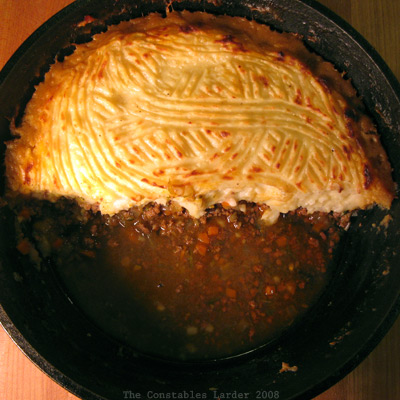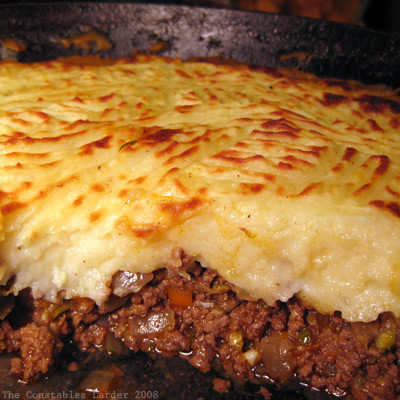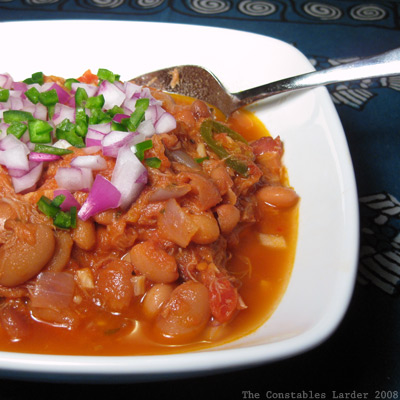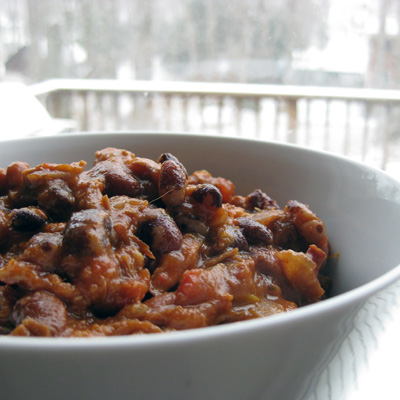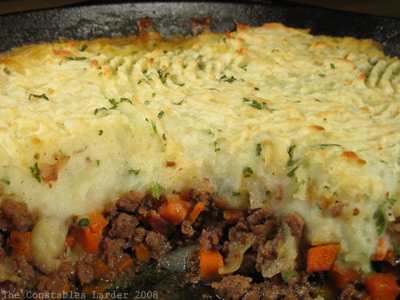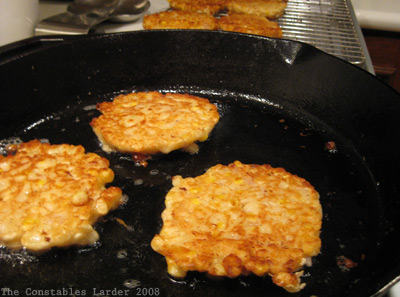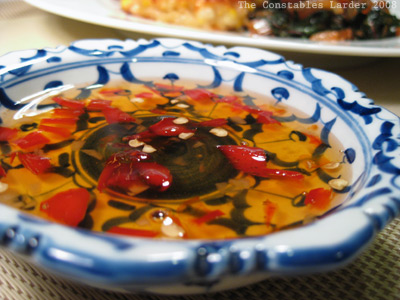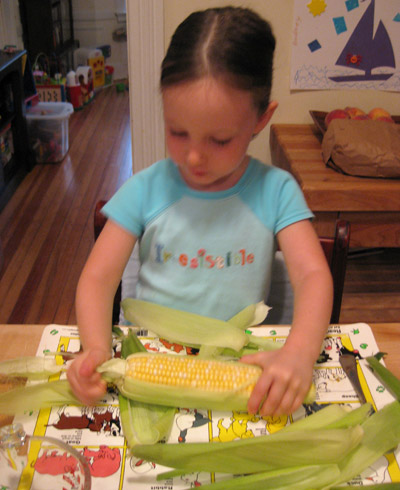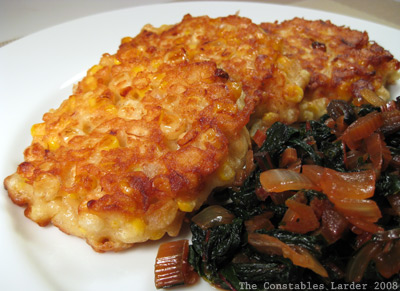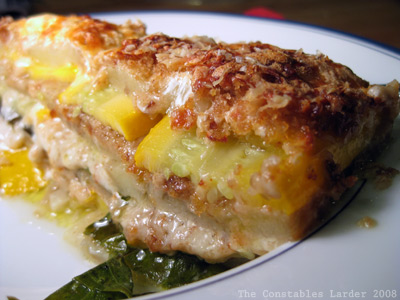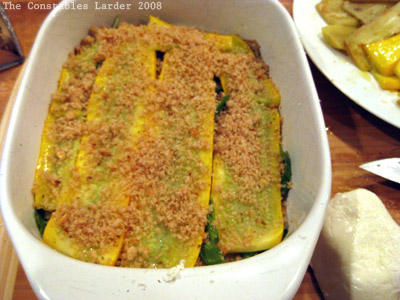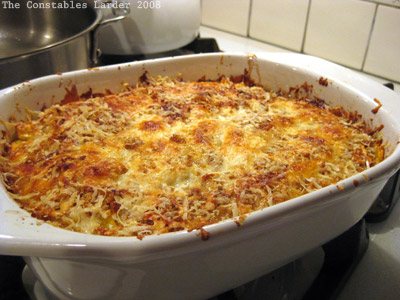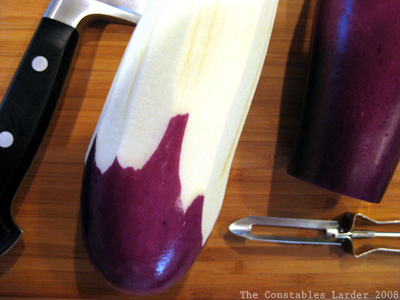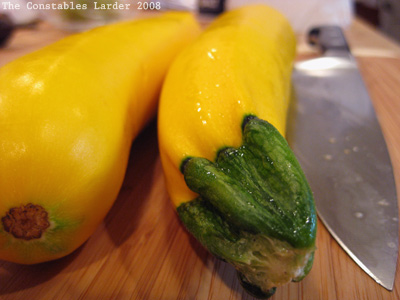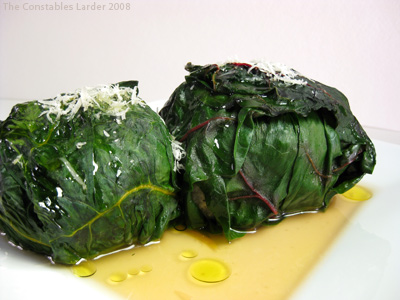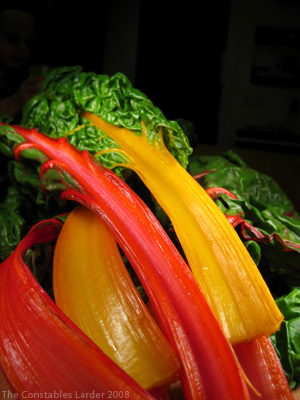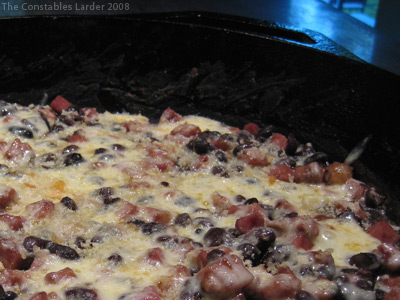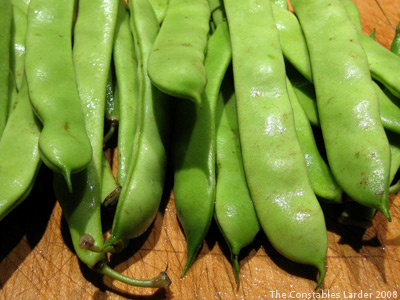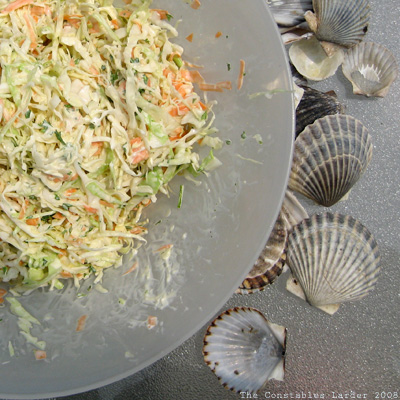The first project with my Rancho Gordo beans was a vegetarian chili using some of the fresh vegetables from the farm stand. This is another “get it all in the pot and let it cook for a while” dish. For this project, I used the Pebble beans, and of course you can use other, more commonly found beans (a common mix is kidney, pinto and great northern). The colors were a wonderful mix of browns and oranges — it was like Fall in a pot.
Vegetarian Chili
Serves 4 – 6, depending on bowl size 😉
1 lb pebble beans (or other bean mixture)
3 medium tomatoes
7 or 8 tomatilloes
2 red hot chili peppers
2 hot cayenne peppers (if available, otherwise use red chili peppers or jalapenos)
2 ears of corn (1 for chili, 1 for garnish)
2 onions (1 left whole, 1 chopped)
4 scallions, chopped
4 cloves of garlic, minced
2 bay leaves
2 tbsp ground cumin
2 tbsp fresh oregano, chopped (or half as much dried oregano)
salt
cilantro
natural greek yogurt
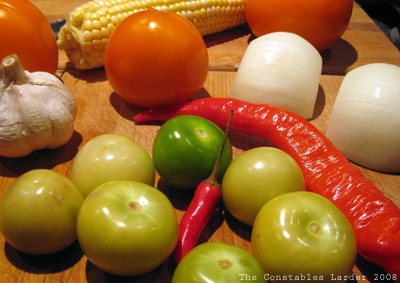
Just a few of the ingredients
Prepping the beans
Rinse and quickly pick over the beans to remove cracked beans or small stones. Soaking is optional (just requires longer cooking), but beans are easier to digest if you bring them to a boil for a couple of minutes, then turn off the heat to let them soak for over an hour. When done soaking, drain and rinse in a collander.
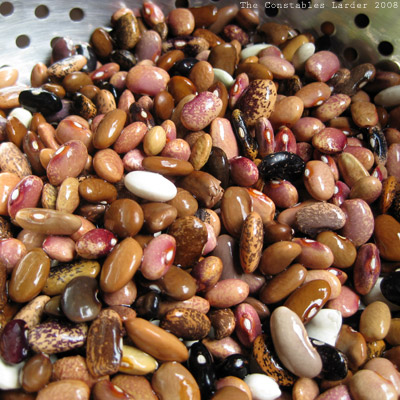
Rinsed Pebble beans, pre-soaking
Cooking the beans
Peel off the roughest outer layers of an onion and poke a few holes in it with a knife, making one large enough to insert a bay leaf. Place the rinsed beans and onion in a heavy bottomed pot (I like using my cast iron dutch oven), fill with cold water about an inch over the tops of the beans, and bring to a boil. Once the water is boiling, reduce to a simmer and cook for 45 minutes or so. Save at least 4 cups of the cooking liquid, and then drain the rest, putting the beans to the side in a bowl.
Cooking the Chili
Preheat the oven to 280F.
Chop up the onion and scallions, mince the garlic, and saute in the dutch oven on medium-low heat with a little bit of olive oil. If you have time to skin and de-seed your tomatoes, do so, then roughly chop them up and add to the pot. Remove the husks from the tomatilloes, dice, and add to the pot. Cut the kernels of an uncooked ear of corn and add to the pot. Add the oregano and ground cumin, 2 tsp of salt, and 2 of the hot peppers, minced. Finally add in the beans and a cup of the bean-cooking liquid, and mix it all together gently. As you will see in the below picture, I also kept and added the whole onion from cooking the beans.
Cover and place in the oven.
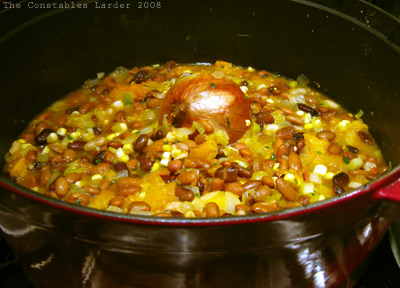
At this point, you can cook on low heat for as long as you have (or can bear), but at least another hour. Check every 30 – 45 minutes and add more of the bean-cooking liquid if it is looking dry. I probably ended up adding at least two cups of liquid. About an hour in, I removed the whole onion and added a fresh bay leaf. Continue to taste for the desired balance of cumin, salt and heat from the fresh peppers, and adjust accordingly. I used 2 red chili peppers and 2 fresh cayenne peppers, but with fresh peppers heat can really vary so treat carefully if you have a sensitive palate. When you add more heat, let it cook until your next checkpoint before tasting again and adding.
Depending on your desired texture and aesthetics, if you want to thicken up the chili, put one or two large spoonfuls of the chili in a food processor and roughly puree, then stir back into pot. (Note: it isn’t quite as pretty if you do this, but you do a get a wonderfully thick “comfort food” texture.)
Before serving, chop up some fresh cilantro and cook an ear of corn (method of cooking is of no matter – I microwaved it still in the husk for 2.5 minutes) and cut off the kernels. Add a dollop of yogurt (or sour cream) to each bowl and garnish with the fresh corn kernels and cilantro. Other nice garnishes are diced sweet red pepper, grated cheese, and diced red onion. It can be fun to serve each garnish in an individual bowl so your eaters can take their pick.
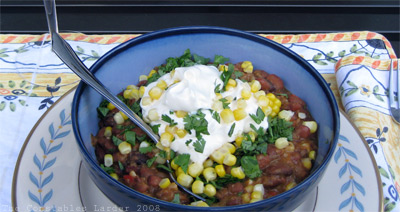
Additional notes:
Using the oven isn’t necessary, but I find that it reduces any risk of burning at the bottom of the pot (a handy thing if you get tied up by, say, a mischevous 3 year old and forget to check on it for a bit) and makes it easier to keep the chili at a low simmer. In my case, I actually started the chili yesterday evening and left it in the oven with the heat turned off when I went to bed (while placing the extra bean-cooking liquid in the fridge). When I woke up, I added some more liquid to the pot, brought it all to a boil again on the top of the stove, and then placed back in the oven for a few more hours.
If you don’t have fresh hot peppers, you can use chili powder, but remember to start light (say, a tsp or two) and build up to the desired heat level, and you might also scale back the garlic, cumin, and oregano since chili powder is a mix of spices.
Finally, those of you who have been reading this blog are picking up that I am more about country/peasant/comfort food than haute cuisine. While I had to resist mightily from adding any meat to this chili dish, it came together well and was a filling and truly delicious meal.



